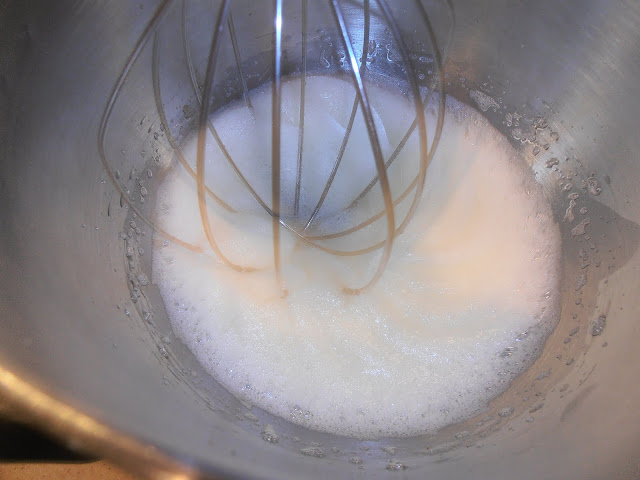I say "seasonal" because I tend to make them at Christmastime, however they are good any time of the year. I just know that if I make them, I will eat them, so keeping it to a season is best for my waistline.
Once these are made, they are hard to forget. They are light, crisp, sweet, and flavorful. At a time when sweet goodies are in abundance, they are a nice change from the heavier cookies, cakes, and pies.
So why are they Forgotten Cookies? Because once you prepare their mixture, you put them in the oven and forget about them! I typically choose to make them at night so they can sit in the oven while I sleep, but you can make them any time you know you won't need your oven for the day.
Please enjoy one of my favorite recipes:
Forgotten Cookies (30 to 35 cookies)
 |
| My handwriting many years ago. |
2/3 cup sugar
1 teaspoon vanilla
1 cup chocolate chips
1 cup chopped pecans or walnuts
 |
| I used vanilla sugar instead of sugar and vanilla. Works great either way! |
Put aluminum foil on the cookie sheets then spoon-drop cookies onto the foil. Never use a greased pan.
Turn off oven. Put cookies in. Forget about them until the next morning. Don't open the oven until ready to take the cookies out.
My Notes
Sometimes I use vanilla sugar and sometimes I use sugar and vanilla, as directed in the recipe. Either way is fine, especially if your vanilla sugar is highly flavored. If you don't know how to make vanilla sugar, look at this post: Vanilla Sugar and Grace Firth.
By "foamy", I used to think "as soon as I see a lot of bubbles in the whites." But putting in the sugar at this stage gives a wetter mixture, so I wait until the bubbles are small and the whites are changing from yellowish to creamy.
 |
| Too soon! |
 |
| Getting closer |
 |
| Now is a good time to add the sugar. |
 |
| See the peaks? |
As for the chocolate chips and nuts additions, I vary it according to my needs and tastes at the time. Just chocolate chips (as I did for this example) is fabulous. There is something about the slow bake time that transforms the chips into slightly softer versions of themselves, which is appealing. I used 1 cup chocolate chips for this example and thought the amount was just right.
Sometimes I use just nuts, and sometimes I put in crushed peppermint candies. The candies are small and intense in flavor, so using 1/2 to 3/4 cup seems about right. It is also fine to put in both chocolate chips and peppermints! Whatever your taste buds desire.
When you drop the mixture onto the cookie sheet, pay attention to how big the portions are. Too big means the heat won't necessarily get through to the middle of the cookie, which leaves a danger of eating uncooked egg white. They don't have to be huge to be appreciated.
The pictures I have of the cookies here show the cookies being too big. Not greatly so but there were some that had sticky centers.
These cookies don't spread and only slightly puff, so you can put them very close together on the cookie sheet.
Here is a pan before baking:
 |
| Make them a little smaller than this. |
 |
| They have a rounder, softer look after baking. |
The Verdict
These are so good! You can vary the sugar level to make them less sweet. The combination of crispy egg white, sweet, vanilla, and creamy chocolate is irresistible. And they are light, which makes it easy to enjoy them and not feel full.
If your oven is big enough, make several batches at a time. I did a triple batch after having a lot of whites left over from another recipe.
I have heard that people have piped the cookies for a more uniform, decorative effect. This is great as long as the additions can fit through the nozzle.
I also know that there is a way to bake them in a low temperature oven, to make them quickly instead of waiting overnight. Either way, you end up with a scrumptious cookie.
Merry Christmas!







